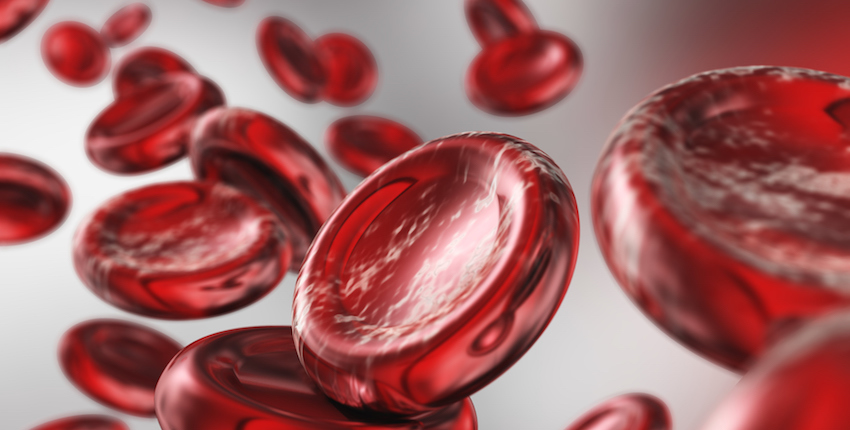
In a powerful example of bench-to-bedside science showing how observations made in the lab can spark life-altering therapies in the clinic, an international team of investigators has announced that gene therapy can be safe and effective for patients with a severe form of the blood disorder beta-thalassemia.
Led by Philippe Leboulch, lecturer in medicine, part-time, at Harvard Medical School and a sponsored collaborator in the Brigham and Women’s Hospital Division of Genetics, an international research team reports that a one-time treatment with the gene therapy known as LentiGlobin BB305 vector reduced or eliminated the need for blood transfusions in 22 patients with severe beta-thalassemia.
The results have been published in The New England Journal of Medicine.
“It was always our hope to bring our research findings to patients,” said Leboulch, whose primary appointment has transitioned to the University of Paris as professor of medicine and institute director. “We have taken our work from the lab, through preclinical models and past the proof-of-principle stage and are now able to gauge its effectiveness in patients with this disease. It is immensely gratifying.”
Restoring hemoglobin production
Beta-thalassemia is a genetic disorder that impairs the body’s ability to produce a key component of hemoglobin, the protein in red blood cells that carries oxygen to organs and tissue. Beta-thalassemia and sickle-cell disease are related disorders—both hamper hemoglobin production and can have lifelong repercussions.
From toddlerhood on, people with the most severe forms of beta-thalassemia require monthly blood transfusions to replenish their red blood cell supplies along with iron chelation to remove extra iron from the body.
As a postdoctoral fellow at Massachusetts Institute of Technology, Leboulch began researching a therapeutic approach to compensate for the genetic mutations that lead to both sickle-cell disease and beta-thalassemia. In the 1990s, Leboulch joined HMS and Brigham and Women’s, where he continued his work to develop a viral carrier, or vector, that could insert genetic instructions into a patient’s own blood stem cells and restore hemoglobin production.
Leboulch and colleagues hoped that introducing the altered stem cells back into people would allow the cells to make enough hemoglobin, eliminating the need for blood transfusions.
Leboulch and colleagues studied the vector, LentiGlobin, in pre-clinical models, publishing results from mouse studies in Science. In 2010, Leboulch and his collaborator, Marina Cavazzana of University Paris-Descartes, published a paper in Nature detailing the success of using LentiGlobin to genetically correct cells and transplant them into a single beta-thalassemia patient. Last year, they published in NEJM on a successful gene therapy of the first sickle-cell anemia patient using the same vector.
Blood transfusions no more
In the newly published NEJM study, Leboulch, Cavazzana and their colleagues teamed up with a second group of U.S. and international clinical investigators in Australia and Thailand to share data and results from their respective phase II clinical trials.
In total, the two teams treated 22 patients at six different sites around the world. Among nine patients with the most severe form of beta-thalassemia, the one-time treatment reduced the need for red-blood cell transfusions by 73 percent. Three of the nine subsequently discontinued transfusions altogether. Twelve of the 13 patients with a slightly less severe form of the disease no longer needed any blood transfusions after treatment.
The team reports no safety concerns—treatment-related adverse effects were typical of those seen in patients who receive transplants of their own stem cells.
“When you have an anecdote of a single patient, you never know if it will be confirmed. Here, with a multi-center trial in a larger number of patients, we see a convergence of results, and we can measure the magnitude of the therapeutic effect,” said Leboulch.
“There is room for improvement, as we’d like to see the elimination of dependency on transfusion even for patients with the most severe form of the disease,” he added. “But there is also hope with protocol modifications we have introduced in our phase III trials.”
Based on these results, two pre-drug marketing phase III clinical trials have begun.
Patents on the LentiGlobin BB305 vector are owned by Bluebird Bio, which also sponsored the study. Leboulch is one of the co-founders of Bluebird Bio.
This work was further supported by the National Center for Advancing Translational Sciences of the National Institutes of Health (grants UL1TR000003 and UL1TR001878), Assistance Publique–Hôpitaux de Paris and INSERM, Commissariat à l’Energie Atomique et aux Energies Alternatives and the Agence National de la Recherche.
Financial disclosure forms provided by the authors are available with the full text of this article at NEJM.org.
A full list of co-authors on the research is available with the full text of this article at NEJM.org.


